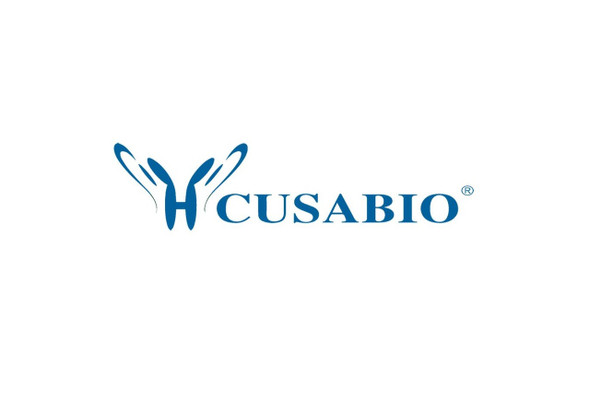Cusabio Human Recombinants
Recombinant Human PCNA-associated factor (PCLAF) | CSB-EP012164HU
- SKU:
- CSB-EP012164HU
- Availability:
- 3 - 7 Working Days
Description
Recombinant Human PCNA-associated factor (PCLAF) | CSB-EP012164HU | Cusabio
Alternative Name(s): Hepatitis C virus NS5A-transactivated protein 9 ;HCV NS5A-transactivated protein 9Overexpressed in anaplastic thyroid carcinoma 1 ;OEATC-1;PCNA-associated factor of 15KDA ;PAF15 ;p15PAF
Gene Names: PCLAF
Research Areas: Metabolism
Organism: Homo sapiens (Human)
AA Sequence: MVRTKADSVPGTYRKVVAARAPRKVLGSSTSATNSTSVSSRKAENKYAGGNPVCVRPTPKWQKGIGEFFRLSPKDSEKENQIPEEAGSSGLGKAKRKACPLQPDHTNDEKE
Source: E.coli
Tag Info: N-terminal GST-tagged
Expression Region: 1-111aa
Sequence Info: Full Length
MW: 39 kDa
Purity: Greater than 90% as determined by SDS-PAGE.
Relevance: PCNA-binding protein that acts as a regulator of DNA repair during DNA replication. Following DNA damage, the interaction with PCNA is disrupted, facilitating the interaction between monoubiquitinated PCNA and the translesion DNA synthesis DNA polymerase eta (POLH) at stalled replisomes, facilitating the bypass of replication-fork-blocking lesions. Also acts as a regulator of centrosome number.
Reference: KIAA0101 is overexpressed, and promotes growth and invasion in adrenal cancer.Jain M., Zhang L., Patterson E.E., Kebebew E.PLoS ONE 6:E26866-E26866(2011)
Storage: The shelf life is related to many factors, storage state, buffer ingredients, storage temperature and the stability of the protein itself. Generally, the shelf life of liquid form is 6 months at -20?/-80?. The shelf life of lyophilized form is 12 months at -20?/-80?.
Notes: Repeated freezing and thawing is not recommended. Store working aliquots at 4? for up to one week.
Function: PCNA-binding protein that acts as a regulator of DNA repair during DNA replication. Following DNA damage, the interaction with PCNA is disrupted, facilitating the interaction between monoubiquitinated PCNA and the translesion DNA synthesis DNA polymerase eta (POLH) at stalled replisomes, facilitating the bypass of replication-fork-blocking lesions. Also acts as a regulator of centrosome number.
Involvement in disease:
Subcellular Location: Nucleus, Cytoplasm, perinuclear region
Protein Families:
Tissue Specificity: Expressed predominantly in liver, pancreas and placenta. Not detected in heart or brain. Highly expressed in a number of tumors, especially esophageal tumors, in anaplastic thyroid carcinomas, adrenocortical carcinomas, and in non-small-cell lung cancer lines.
Paythway: InflammatoryPain
Form: Liquid or Lyophilized powder
Buffer: If the delivery form is liquid, the default storage buffer is Tris/PBS-based buffer, 5%-50% glycerol. If the delivery form is lyophilized powder, the buffer before lyophilization is Tris/PBS-based buffer, 6% Trehalose, pH 8.0.
Reconstitution: We recommend that this vial be briefly centrifuged prior to opening to bring the contents to the bottom. Please reconstitute protein in deionized sterile water to a concentration of 0.1-1.0 mg/mL.We recommend to add 5-50% of glycerol (final concentration) and aliquot for long-term storage at -20?/-80?. Our default final concentration of glycerol is 50%. Customers could use it as reference.
Uniprot ID: Q15004
HGNC Database Link: HGNC
UniGene Database Link: UniGene
KEGG Database Link: KEGG
STRING Database Link: STRING
OMIM Database Link: OMIM









